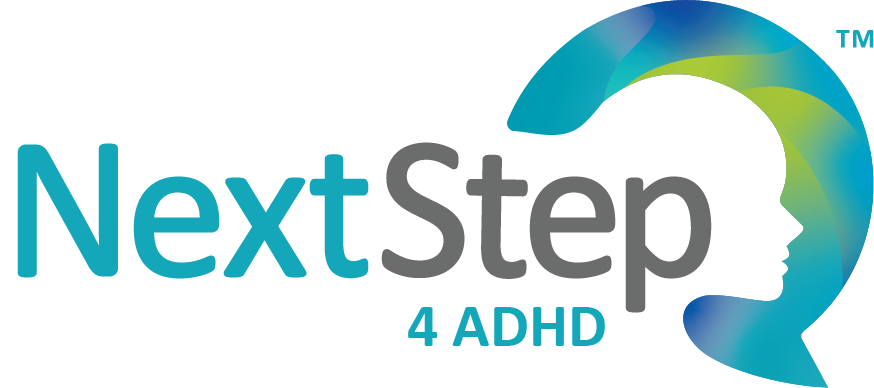
Parenting a Child with ADHD: 5 Tips for Peaceful Bedtime Routines
Bedtime can be one of the most challenging times for parents of children with ADHD. Evidence suggests that sleep problems are more common in children with ADHD. Parents frequently report problems, such as trouble falling asleep, anxiety and difficulty relaxing at bedtime, feeling unrefreshed after sleep, difficulty waking in the morning, and nightmares. Chronic insufficient sleep leads to children becoming overtired and a worsening of ADHD symptoms, including increased hyperactivity, impulsivity, aggression, and mood swings. As parents, there are several techniques that can be implemented to help decrease problematic sleep.
That’s why the ADHD coaches at NextStep 4 ADHD are happy to help parents navigate the challenges of raising a child with ADHD. From providing educational resources to sharing practical tips, our ADHD coaches are with you every step of the parenting journey.
In the meantime, continue reading to learn more about sleep and how the quality of sleep affects children living with ADHD.
Why Good Sleep Matters
Good sleep is more than just logging enough hours. A good night’s sleep refers to both the quality of sleep and the quantity of sleep.
Getting enough sleep plays a critical role in:
- Balancing your child’s mood
- Improved immune function [1]
- Energizing your child (physically and mentally)
- Reducing cortisol levels (the stress hormone)
- Cellular growth and repair
- Improved memory [2]
- Reduced risk of depression [3]
- Reduced risk of childhood obesity [4]
- Improved athletic performance [5]
Even though sleep is crucial for mental and physical well-being, it isn’t always easy to get kids to want to get to bed on time. Some kids may feel like bedtime forces them to miss out on exciting parts of the evening, but here are five tips to make this transition easier:
5 Tips for Making Bedtime Easier
Create consistent sleep-wake routines.
Research has found some evidence to suggest that children with ADHD do not produce enough melatonin, the body’s natural hormone to aid with sleep. Without enough melatonin, a child simply may not feel sleepy at bedtime. Some children may have delays in the timing of the release of melatonin. You can help regulate melatonin production in your child by creating consistent bedtimes and wake times — even on weekends. Because this helps to regulate the brain’s natural sleep rhythms and the release of melatonin, you’ll find that bedtimes get easier.
Establish a bedtime routine.
All children thrive on routines and structures, but children with ADHD need structure in order to function at their best. This is also true at bedtime.
One hour before bedtime:
Parents should start bedtime routines at least an hour before you desire your child to be asleep.
Children should be encouraged to:
- Take a relaxing bath (unless they bathe in the morning as part of wake-up routine)
- Brush their teeth
- Get a small drink of water
- Use the bathroom
- Get into pajamas
Two hours before bedtime:
Children with ADHD need longer, darker, and quieter bedtime routines in order to relax and prepare for sleep compared to other children. Children with ADHD benefit from quiet activities, such as reading, rather than more stimulating activities. All electronic devices, such as phones, tablets, and televisions, should be shut off at least an hour (preferably two) before bedtime. (This is because blue screens can affect the circadian rhythm.) Parents should dim the lights and encourage quiet activities. Some children benefit from reading time with their parent. Not only is this soothing, but it’s a great way to bond!
Drown out ambient noise and light.
Children with ADHD are easily distracted by extraneous noise and light, even when trying to sleep. Use of a white noise machine or a fan to drown out noise can be beneficial if regular household noises are keeping your child awake. Light in the bedroom during sleep time should be limited to a small nightlight.
Consider a weighted blanket.
Children with ADHD have higher incidences of both Restless Leg Syndrome and Periodic Limb Movement Disorder. Restless Leg Syndrome causes discomfort and leads to voluntary movement, and Periodic Limb Movement Disorder is characterized by involuntary movements of the limbs during sleep. Both are associated with poor sleep.
Additionally, some children with ADHD struggle with anxiety at bedtime. Weighted blankets may provide physical and emotional comfort by providing pressure on the body, much like a hug.
Talk to your doctor if sleep difficulties continue.
There are many supplements and medications that may be beneficial to help your child sleep.
Questions? We Are Here to Help!
At NextStep 4 ADHD, we’re happy to provide comprehensive treatment for ADHD for children. To learn more, schedule an appointment at one of our convenient Kentucky offices in Louisville and Lexington. Call the location of your choice, or send us a message to request more information.
Don’t forget to sign up for a membership so you can stay up-to-date with the latest news!
References:
- https://www.ncbi.nlm.nih.gov/pubmed/8621064
- http://learnmem.cshlp.org/content/11/6/671
- https://www.ncbi.nlm.nih.gov/pubmed/16259539
- https://www.ncbi.nlm.nih.gov/pmc/articles/PMC2398753/
- https://www.ncbi.nlm.nih.gov/pubmed/21731144
Related Posts
Helping Your Child with ADHD Adjust to Back-to-School Routines
By now, the initial excitement of the new school year has worn off, and some...
5 Summer Vacation Packing Tips for Teens and Adults with ADHD
Whether you're a parent with ADHD in charge of packing for a family vacation, or...


